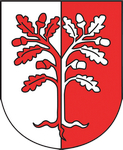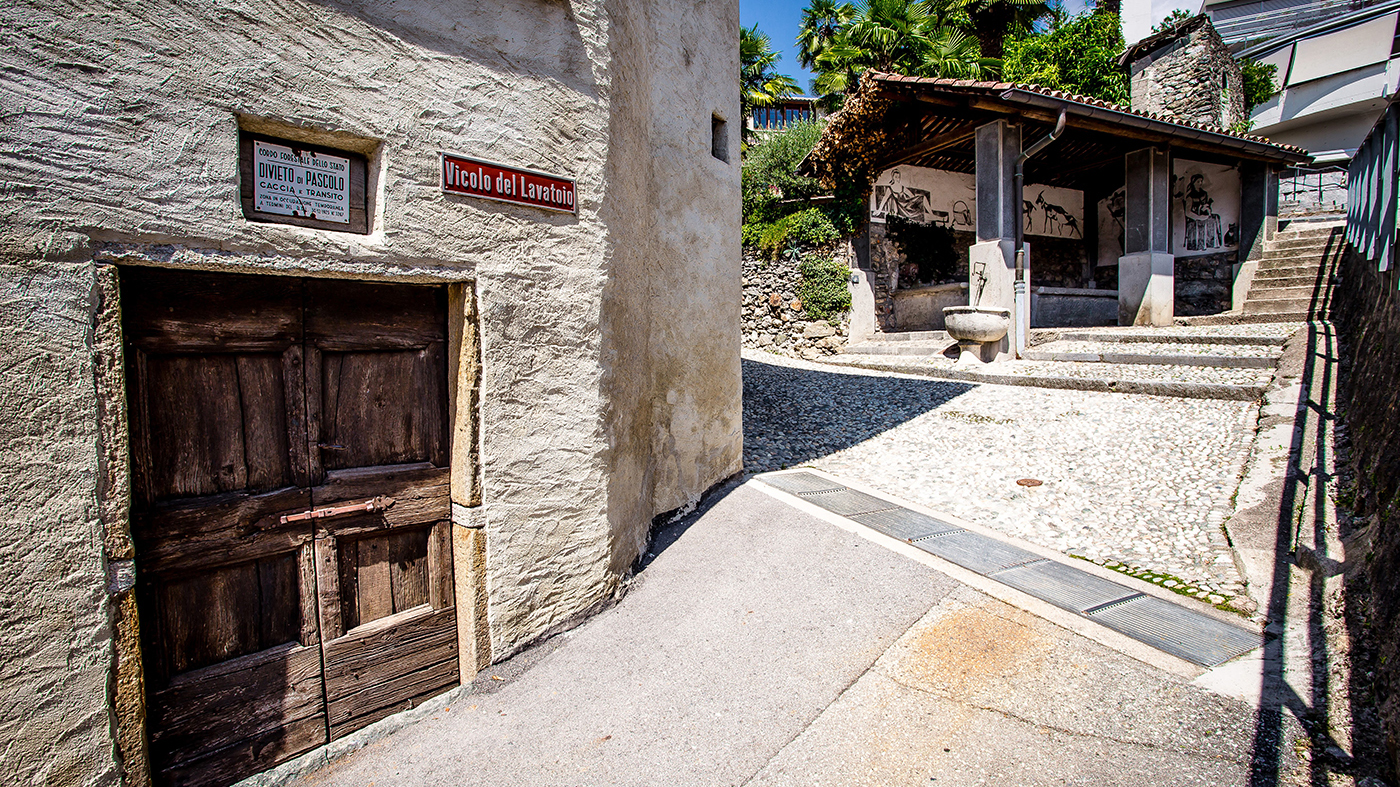History
The district covers an area of 2.5 km² and borders Cadro, Lugano, Pregassona, and Canobbio.
The oldest traces of human presence in Davesco-Soragno date back to the Neolithic, the Iron Age, and Roman times. Of particular interest is a slab with North-Etruscan inscriptions, while historically significant is a building with 15th-century frescoes, likely once a convent of the Order of the Humiliati.
While Davesco was still mentioned as an independent curtis in 1110, the association between Davesco and Soragno began in 1624, when the two hamlets already formed a single community. However, it was only in 1804 that an agreement established the new autonomous municipality, which itself originated from a patriziato.
The dual origins of Davesco-Soragno are still symbolized in its two-colored flag, unified by a single figure: the oak, a symbol of strength and prosperity.
In the last 50 years, the district has experienced significant population growth. It had 194 residents in 1801, 299 in 1850, 356 in 1900, 456 in 1950, and 1,642 residents by the end of 2016.
The coat of arms

The Armoriale dei Comuni ticinesi by Gastone Cambin, published in 1953 by the Istituto Araldico e Genealogico di Lugano, describes the coat of arms of Davesco-Soragno as follows: "Per pale, argent and gules, with a fruit-bearing and uprooted oak tree counterchanged."
The white and red represent the two hamlets of Davesco and Soragno, united into a single political entity symbolized by the oak tree, which stands for strength and prosperity.
Places of interest
Five minutes from the village, near the Church of San Bartolomeo, an important archaeological discovery was made in 1813. During an excavation to uproot a walnut tree in the surrounding vineyard, an Etruscan tombstone was uncovered along with human remains.
In a document from 1849, Luigi Lavizzari explains: “The inscription is carved on rough gray mica-schist stone, similar to the local rock, about 1.70 meters long and 0.50 meters high. The letters are crudely carved, shallow, and 12 centimeters high.” The script, written from right to left, may have been the work of the Euganean Etruscans.
The inscription, similar to others found in various areas of northern Italy, confirms that the region was inhabited by wealthy individuals.
After its removal, the significant find was embedded into a wall along the roadside and later acquired by the Museum of Chur, where it is now preserved.
The main church of Davesco dates back to 1366. A bishop's document mentions a church where, under its portico, land and forest leases were assigned to local serfs. This was a Benedictine church, smaller than the current structure, featuring a Romanesque bell tower.
The presence of these religious buildings is thought to be linked to the existence of a Benedictine center in the Castellanza di Sonvico, associated with the monastery of San Carpoforo in Como.
The originally modest structure underwent several modifications over the centuries, evolving into the form we see today.
At the northern entrance of the village, along the old main road, stands the Chapel of Santa Maria del Soccorso. This small, square-plan room is decorated with frescoes and features a gabled roof supported by the house opposite. It opens into three niches.
The chapel was built during a time when travel between villages was particularly dangerous and lengthy. Travelers moved on foot, risking encounters with brigands. This small place of worship served as a source of moral support and, more importantly, as shelter from bad weather.

The English version of this page was created with the aid of automatic translation tools and may contain errors and omissions.
The original version is the page in Italian.